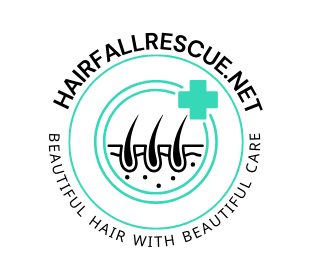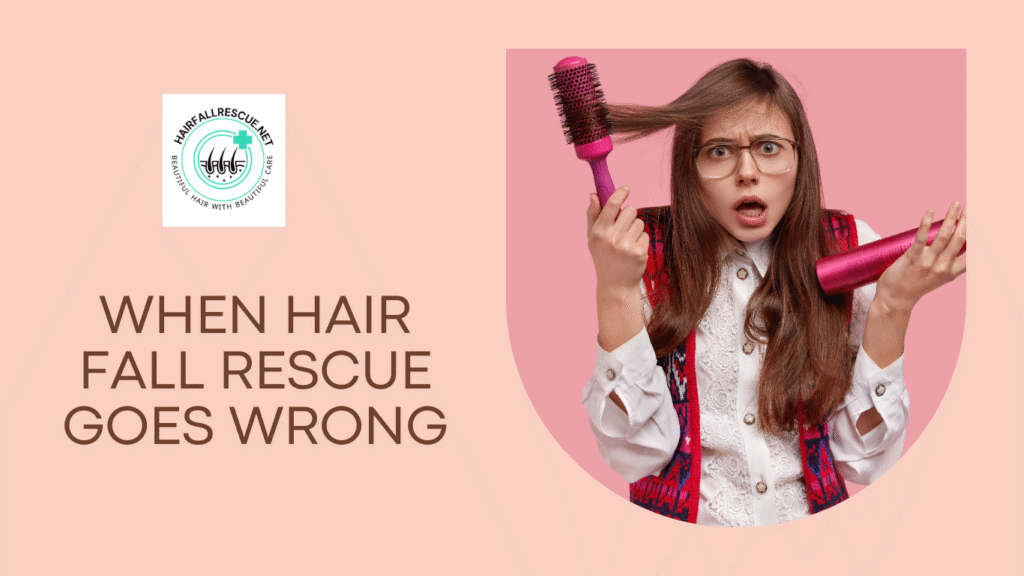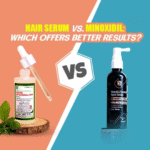When Hair Fall Rescue Goes Wrong: Learning from Real Incidents
Table of Contents
- Introduction
- Understanding Hair Fall
- Case Study 1: The DIY Disaster
- Case Study 2: The Salon Misstep
- Case Study 3: The Social Media Trap
- Common Hair Fall Rescue Mistakes
- What Actually Works?
- Hair Rescue Comparison Table
- Expert Tips for Healthy Hair
- Conclusion
- External Resources
Introduction
Hair fall is one of the most common beauty and health complaints worldwide. Whether triggered by stress, poor diet, hormonal imbalance, or external products, hair loss can impact confidence and well-being. Naturally, people search for fast, affordable solutions. Unfortunately, many of these attempts—especially those trending on social media or recommended without medical basis—end up making the situation worse. This blog explores real-life case studies of hair fall rescue attempts gone wrong and extracts practical lessons you can apply in your own hair care journey.
Understanding Hair Fall
Hair loss is not always due to external damage. According to the American Academy of Dermatology, common causes include:
- Genetic conditions (androgenic alopecia)
- Hormonal shifts (pregnancy, menopause, thyroid disorders)
- Nutritional deficiencies (iron, vitamin D, B12, zinc)
- Medical treatments (chemotherapy, certain medications)
- Stress and poor sleep
Understanding the root cause is the first and most important step in solving hair fall. Applying surface-level solutions without diagnosis can backfire—leading to long-term damage.
Case Study 1: The DIY Disaster
Ritika, a 26-year-old with mild hair thinning, turned to Pinterest for solutions. She found a recipe for a potent hair mask using raw onion juice, castor oil, and tea tree oil. After using it twice a week for 6 weeks, she developed intense scalp irritation, rashes, and more hair fall. Her dermatologist later confirmed she had a sensitivity to essential oils and that undiluted tea tree oil had caused a chemical burn.
Lesson: “Natural” doesn’t always mean safe. Oils and extracts must be diluted. Always do a patch test and avoid using internet recipes as replacements for expert advice.
Case Study 2: The Salon Misstep
Rahul, a 34-year-old marketing manager, opted for a keratin hair treatment that promised smooth, shiny hair. Within a month, his hair started thinning and his scalp flaked uncontrollably. He had unknowingly undergone a treatment that used formaldehyde—a carcinogenic chemical banned in many countries. The treatment weakened his hair roots and triggered telogen effluvium.
Lesson: Always ask for the ingredient list and choose certified professionals. Hair treatments can do more harm than good if not tailored to your needs.
Case Study 3: The Social Media Trap
Shreya, a college student, ordered three different “magical” hair growth serums she saw in reels on Instagram. She used all of them simultaneously without checking ingredients. A month later, she had clogged follicles, dandruff, and even developed a fungal scalp infection. The cause? Conflicting ingredients and excessive oiling without proper cleansing.
Lesson: More products do not mean faster results. Stick to one dermatologist-approved product and give it time—usually 3–6 months—for visible improvement.
Common Hair Fall Rescue Mistakes
- Using multiple products at once
- Trusting trending reels without verifying claims
- Skipping professional consultation
- Overwashing or underwashing the scalp
- Using hot tools daily without protectant
What Actually Works?
Instead of panicking and experimenting blindly, consider these proven methods:
- Improve your nutrition: Include more protein, leafy greens, nuts, seeds, and water. Try foods like eggs, spinach, and pumpkin seeds. (Healthline Guide)
- Use mild, pH-balanced shampoos: Harsh cleansers strip natural oils. Choose sulfate-free options.
- Massage your scalp: Improves blood circulation. Use coconut, almond, or jojoba oil once a week.
- Protect your hair: Avoid tying it too tight or styling when wet.
- Stay consistent: It takes time to reverse damage. Avoid switching products every week.
Hair Rescue Comparison Table
| Method | Risk | Expert Verdict |
|---|---|---|
| DIY Masks | Moderate | Safe if ingredients are verified and patch-tested |
| Salon Treatments | High | Often contains chemicals; choose only certified salons |
| Instagram Serums | Very High | Check ingredients & certifications |
| Balanced Diet & Scalp Massage | Low | Highly recommended by dermatologists |
Expert Tips for Healthy Hair
- Use satin or silk pillowcases
- Don’t sleep with wet hair
- Trim hair every 8 weeks
- Get your iron and thyroid levels checked
- Avoid extreme diets—they trigger telogen effluvium
Conclusion
Hair fall rescue is not about quick fixes—it’s about understanding your body, respecting your scalp, and staying committed to long-term habits. Instead of getting swayed by marketing gimmicks or viral hacks, trust dermatologists, focus on your nutrition, and use minimalist routines. Hair takes time to recover, and panicked experimenting can delay progress. Learn from these real-life incidents and make smarter choices for your scalp’s future.
External Resources
- NIH: Hair Loss Research
- American Academy of Dermatology
- Healthline: Hair Loss Causes
- Mayo Clinic: Hair Loss Info
- WebMD Hair Loss Tips
Disclaimer: This article is for educational purposes only and does not substitute for professional medical advice. Always consult a licensed dermatologist for diagnosis and treatment.



